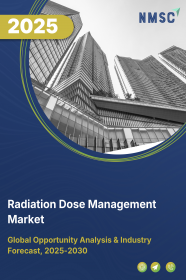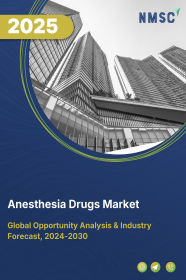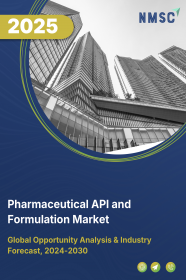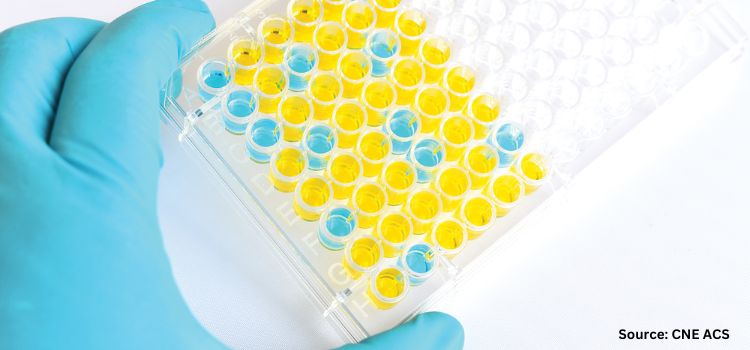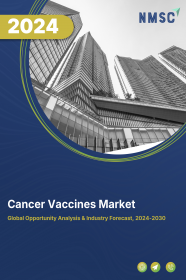
Cancer vaccine market by Technology (Dendritic Cells, Recombinant Vaccines, Antigen/Adjuvant Vaccines, Whole Cell Vaccines, and Viral & DNA Vaccines), Type Preventive Vaccines and Therapeutic Vaccines), Disease Indication (Cervical Cancer, Prostate Cancer, and Others), and End User (Pediatrics and Adults): Global Opportunity Analysis and Industry Forecast, 2023–2030
Industry: Healthcare | Publish Date: 05-Dec-2024 | No of Pages: 207 | No. of Tables: 152 | No. of Figures: 131 | Format: PDF | Report Code : HC187
Market Definition:
Cancer Vaccine Market was valued at USD 9.56 billion in 2023, and is predicted to reach USD 125.53 billion by 2030, with a CAGR of 14.08% from 2024 to 2030. Cancer occurs when there is an abnormal growth of cells, which can further invade adjoining parts and spread to other organs in the body. Cancer vaccines are divided into three categories, namely, cell-based, protein- or peptide-based, or gene-based.
Cell-based vaccines include tumor cells or tumor cell lysates. Peptide-based cancer vaccines consist of cancer specific-epitopes. These vaccines require an adjuvant to stimulate the immune system and enhance antigenicity. A gene-based cancer vaccine is a type of vaccine that works by using genetic material such as DNA or RNA to stimulate the immune system to recognize and attack cancer cells. Moreover, cancer vaccines are often combined with other substances or cells known as adjuvants that further help in boosting the immune system to fight against cancer.
Emerging Cases of Cancer Worldwide
The rise in cases of cancer across the globe, owing to malnutrition and unhealthy lifestyle has led to a growth in demand for cancer vaccines. For instance, in February 2022, the World Health Organization (WHO) announced that cancer was a leading cause of death globally, and around 10 million people died in 2020. Moreover, the increase in cases of Human Papillomavirus (HPV), which causes cervical cancer drives the cancer vaccines market growth. For instance, in February 2022, the WHO stated that cervical cancer was the fourth most common cancer in women that accounted for around 604,000 new cases and 342,000 deaths in 2020, globally.
Rise in Initiatives by Government and International Organizations to Eliminate Cancer
Growth in initiatives by government and international organizations to eliminate cancer, boosts the market sharefor tumor vaccines. For instance, in July 2021, the U.S. Department of Health and Human Services (HHS) on Women's Health (OWH), developed the ‘HPV VAX NOW’ campaign with the long-term goal of increasing HPV vaccination rates among young adults aged 18 to 26 living in Mississippi, South Carolina, and Texas. The campaign aimed to help young adults in these states by creating awareness regarding the risk of HPV-related cancers and it also discussed the benefit of HPV vaccines in reducing the risk of cervical cancer.
In addition, the introduction of various strategies to create consciousness about breast cancer symptoms and the availability of treatments such as vaccines, therapy, and drugs among women is driving the growth of the cancer vaccine market. For instance, in October 2021, WHO launched an interactive chatbot that uses the Viber platform to deliver health information directly to women on mobile phones. The chatbot delivers information regarding symptoms, steps to reduce the risk of breast cancer, and treatment options available for this cancer.
Longer Timelines and High-Cost Hinder the Market Growth
The longer timeline for manufacturing cancer vaccines and the high cost of this vaccine restrain the growth of the tumor vaccines market. A typical vaccine takes 5 to 10 years, and sometimes longer, for its development. This is generally, owing to the time taken to access whether the vaccine is safe and effective in clinical trials, completing regulatory approvals, and manufacturing a sufficient quantity of vaccine doses for widespread distribution. Moreover, the presence of alternative therapies such as acupuncture, aromatherapy, and hypnosis of cancer reduces the use of vaccines, which, in turn, restrains the growth of the cancer vaccines market.
Technological Advancements in the Healthcare Sector
Early diagnosis of various types of cancers such as breast, lung, and liver, owing to the availability of advanced methods such as biomarker testing, which can detect cancer at an early stage, is expected to create lucrative opportunities for the cancer vaccines market during the forecast period. Moreover, the use of artificial intelligence (AI) in diagnosing various cancers and developing drugs & propels the market growth.
North America Holds a Major Share of the Cancer Vaccine Market
North America holds a major share of the market and is expected to remain dominant during the forecast period. The presence of cancer vaccines with FDA approvals in the region further propels market growth. For instance, the U.S. Food and Drug Administration approved the Human Papillomavirus Vaccine (HPV) to prevent HPV infection, which is responsible for cervical cancers.
In addition, the surge in cases of cancer in the region, owing to the high consumption of alcohol and smoking habits propels the demand for cancer vaccines. According to the American Cancer Society about 1.9 million new cancer cases were diagnosed and 608,570 cancer deaths occurred in the United States in 2021. Moreover, various market players in the region such as Generex Biotechnology Corporation and UbiVac, Inc. are focused on developing cancer vaccines, which, in turn, is expected to propel the cancer vaccines market growth, globally. For instance, in June 2020, UbiVac collaborated with Bristol Myers Squibb for a clinical trial of DPV-001 to evaluate the safety, tolerability, and preliminary efficacy of the product. DPV-001 is a cancer vaccine that instructs the immune system to destroy cancer cells.
Europe Witnessed Substantial Growth in the Cancer Vaccine Market
Europe is expected to show a steady rise in the market, owing to a surge in cases of cancer in the region. According to the European Commission, in 2021, there were around 12 million cancer survivors in Europe, out of which around 300,000 survivors were children. In addition, the presence of local manufacturers in the region that are adopting various strategies such as product launches further propels the growth of the tumor vaccines market.
For instance, in January 2021, Transgene, a biotech company that designs and develops virus-based immune therapeutics against cancer, announced that a patient with head and neck cancer was provided with a dose of TG4050, an innovative individualized immunotherapy prepared by the company. This novel therapeutic vaccine is based on Transgene’s myvac technology platform, which uses cutting-edge AI capabilities to customize treatment for patients. Moreover, rise in R&D in the region to develop cancer vaccines further propel the tumor vaccines market growth.
For instance, in May 2022, MyNEO N.V., a Belgium-based immunotherapy company and CureVac N.V announced that they entered into a research and option agreement to identify specific antigens for the development of novel mRNA cancer vaccines. Under the agreement, MyNEO will use its biological datasets, integrated machine learning, and bioinformatics platform to identify and validate specific antigen targets predicted to elicit a strong immune response.
Competitive Landscape
Various market players operating in the cancer vaccine industry includes GlaxoSmithKline plc, UbiVac, Inc, Biontech, Dendreon Pharmaceuticals, Inc, Dynavax Technologies Corporation, Merck & Co., Inc, Imugene Limited, Moderna, Inc, Northwest Biotherapeutics, Inc., and Oxford Vacmedix. These market players are adopting various strategies such as product launches, partnerships, and expansion across various regions to maintain their dominance in the cancer vaccine market.
For instance, in August 2022, Merck joined hands with Orna Therapeutics, a biotechnology company pioneering a new investigational class of engineered circular RNA (oRNA) therapies. The agreement is expected to help in discovering, developing, and commercializing multiple programs, including vaccines and therapeutics in areas of infectious disease and oncology.
In addition, in February 2022, Northwest Biotherapeutics announced that it started production of DCVax for solid tumor cancers. Its vaccines and therapies were approved by the UK Medicines and Healthcare Products Regulatory Agency.
Moreover, in November 2020, Moderna, Inc, announced the expansion of its ongoing Phase 1 study of the mRNA personalized cancer vaccine (PCV) mRNA-4157 in combination with Merck’s Keytruda1 at The Society for Immunotherapy of Cancer's Annual Meeting (SITC 2020). The dose expansion cohort included 10 patients with HPV head and neck squamous cell carcinoma (HNSCC) and 17 patients with microsatellite stable colorectal cancer (MSS-CRC) for the trial of the vaccine.
Cancer Vaccine Market Key Segments
By Technology
-
Dendritic Cells
-
Recombinant Vaccines
-
Antigen/Adjuvant vaccines
-
Whole Cell Vaccines
-
Viral & DNA Vaccines
By Type
-
Preventive Vaccines
-
Therapeutic Vaccines
By Disease Indication
-
Cervical Cancer
-
Prostate Cancer
-
Others
By End User
-
Pediatrics
-
Adults
By Region
-
North America
-
U.S
-
Canada
-
Mexico
-
-
Europe
-
Germany
-
France
-
UK
-
Italy
-
Spain
-
Rest of Europe
-
-
Asia-Pacific
-
Japan
-
China
-
India
-
Australia
-
Rest of Asia-Pacific
-
-
RoW
-
Brazil
-
Argentina
-
Turkey
-
South Africa
-
Remaining Countries
-
Key Players
-
GlaxoSmithKline plc
-
UbiVac, Inc
-
Biontech
-
Dendreon Pharmaceuticals, Inc
-
Dynavax Technologies Corporation
-
Merck & Co., Inc
-
Imugene Limited
-
Moderna, Inc
-
Northwest Biotherapeutics, Inc.
-
Oxford Vacmedix
REPORT SCOPE AND SEGMENTATION:
|
Parameters |
Details |
|
Market Size in 2023 |
USD 9.56 Billion |
|
Revenue Forecast in 2030 |
USD 25.53 Billion |
|
Growth Rate |
CAGR of 14.08% from 2023 to 2030 |
|
Analysis Period |
2022–2030 |
|
Base Year Considered |
2022 |
|
Forecast Period |
2023–2030 |
|
Market Size Estimation |
Billion (USD) |
|
Growth Factors |
Emerging cases of cancer increases the demand for cancer vaccine. Growing government initiatives to eliminate cancer worldwide |
|
Countries Covered |
19 |
|
Companies Profiled |
10 |
|
Market Share |
Available for 10 companies |
|
Customization Scope |
Free customization (equivalent up to 80 analysts working hours) after purchase. Addition or alteration to country, regional & segment scope. |
|
Pricing and Purchase Options |
Avail customized purchase options to meet your exact research needs. |

















 Speak to Our Analyst
Speak to Our Analyst



